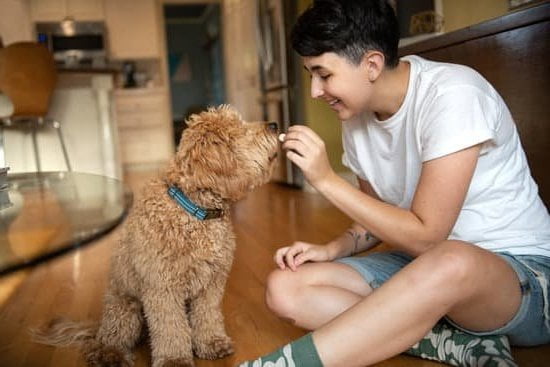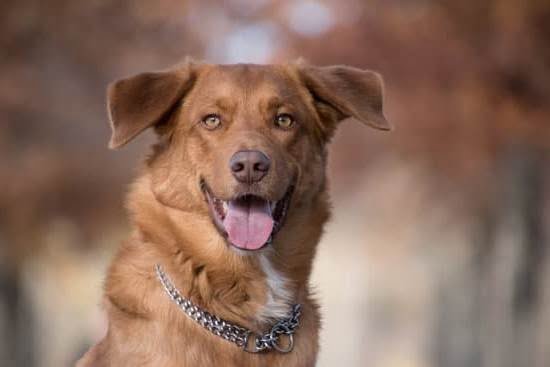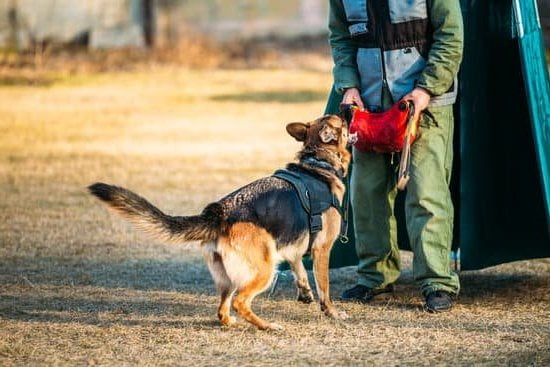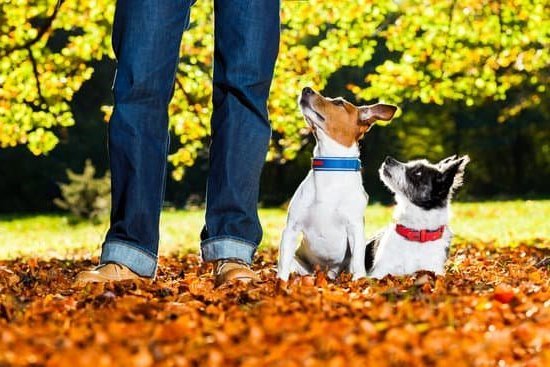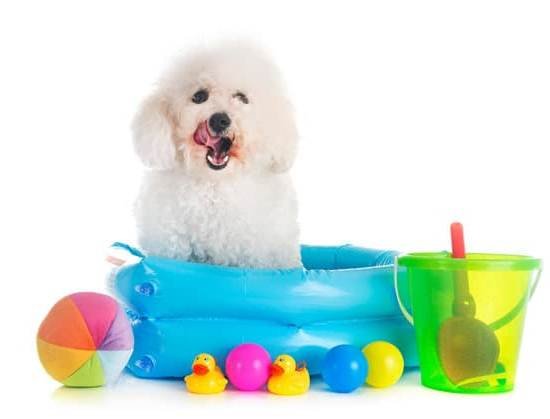When are dogs house trained? House training is an essential part of owning a dog, ensuring a harmonious relationship between pet and owner. Understanding the concept of house training for dogs involves patience, consistency, and positive reinforcement. This process is crucial for teaching your furry companion where it’s appropriate to do their business.
Puppies start learning about house training as early as three weeks old when they begin to develop bladder control. By the time they are eight weeks old, most puppies can start to be housetrained with consistent guidance from their owners. As a dog grows and matures, they become more capable of holding their bladder for longer periods, making it easier to establish a routine for house training.
Recognizing the signs that your dog is ready for house training is key to a successful training process. Some indicators include sniffing or circling before going potty, showing restlessness or scratching at the door, or indicating discomfort after relieving themselves indoors. Paying attention to these cues can help you anticipate when your dog needs to go outside and reinforce positive behavior.
The Timeline of a Dog’s Development
Puppies typically start to learn about house training as early as 8 weeks old. At this stage, they are starting to develop more control over their bladder and bowel movements. However, it is important to note that the exact timeline for house training can vary from one puppy to another. Some puppies may catch on quickly and show signs of understanding the concept within a few weeks, while others may take longer to grasp the idea.
Early Signs of Readiness
One of the key indicators that a puppy is ready to begin house training is when they start showing signs of being able to “hold it in” for longer periods. Puppies that are ready for house training may also exhibit behaviors such as sniffing around, circling, or heading towards the door when they need to go potty. It is essential for pet owners to pay attention to these cues and act promptly when they see their puppy displaying these signs.
Consistency Is Key
Consistency plays a significant role in successfully house training a puppy. Setting up a routine for feeding, potty breaks, playtime, and sleep will help your puppy understand what is expected of them.
By consistently taking your puppy outside to eliminate in the same spot every time, you are reinforcing good behavior and establishing a pattern that they will eventually come to recognize as part of their daily routine. Remember that patience and positive reinforcement are crucial elements in the process of housebreaking your furry friend.
Signs That Your Dog Is Ready for House Training
Understanding Your Dog’s Development
Before delving into the signs that your dog is ready for house training, it is essential to understand the timeline of a dog’s development. Puppies typically start to learn basic behaviors from their mothers and littermates at around three to four weeks old.
By the time they reach eight weeks old, puppies can start to grasp the concept of house training. However, it is important to note that each dog is unique, and some may take longer to be fully house trained than others.
Physical Signs
One of the most obvious signs that your dog is ready for house training is when they begin to exhibit certain physical signs. This includes sniffing the ground, circling a specific area, or squatting as if they are about to relieve themselves. Additionally, if you notice that your dog starts whining, barking, or scratching at the door to go outside, this could also indicate that they are ready for house training.
Behavioral Cues
Aside from physical signs, there are also behavioral cues that can signal your dog’s readiness for house training. If your dog starts to display more self-control and can hold their bladder for longer periods of time, this could be a good indication that they are prepared for house training.
Furthermore, if your dog consistently goes potty in a designated area outside or in a specific spot indoors (if using puppy pads), this shows that they are beginning to understand where it is appropriate to eliminate.
By being attentive to these signs and cues from your furry companion, you can start the house training process at the right time and set both you and your dog up for success in establishing good bathroom habits. Remember that patience, consistency, and positive reinforcement are key elements in effectively teaching your dog proper house training etiquette.
The Importance of Consistency and Positive Reinforcement in House Training
When it comes to house training your dog, consistency and positive reinforcement are key factors in ensuring success. Consistency involves setting a regular schedule for feeding, potty breaks, and playtime. By maintaining a routine, your dog will learn when and where it is appropriate to go potty. This predictability helps them understand what is expected of them, making the house training process smoother.
Positive reinforcement is another essential aspect of house training. This involves rewarding your dog with treats, praise, or playtime whenever they exhibit good behavior such as going potty outside. Dogs respond well to positive encouragement and will be more motivated to repeat the desired behavior when rewarded. It is important to use rewards immediately after the desired behavior occurs so that your dog can make a direct connection between their action and the reward.
Consistency and positive reinforcement work hand in hand to reinforce good habits in your dog during the house training process. It is important to remember that every dog is different and may require varying degrees of time and patience when it comes to learning proper bathroom etiquette. By staying consistent with your approach and using positive reinforcement techniques, you can effectively teach your dog when are dogs house trained while building a strong bond based on trust and clear communication.
| Aspect | Importance |
|---|---|
| Consistency | Setting a regular schedule helps dogs understand expectations. |
| Positive Reinforcement | Rewards motivate dogs to repeat desired behaviors. |
Common Mistakes to Avoid When House Training Your Dog
House training a dog can be a challenging but ultimately rewarding process. One of the most common mistakes that dog owners make is not being patient enough during the training period. It’s important to remember that every dog is different, and some may take longer to grasp the concept of where they should do their business. Rushing the process can lead to confusion and setbacks for your furry friend.
Another mistake to avoid is punishing your dog for accidents in the house. Punishment can create fear and anxiety in your pet, making it even more difficult for them to understand what behavior is expected of them. Instead of scolding or using negative reinforcement, focus on positive reinforcement when your dog eliminates outside. This could include giving treats, praise, or playtime as rewards for good behavior.
Consistency is key when it comes to house training your dog. Inconsistencies in your routine or expectations can confuse your pet and make it harder for them to learn where they should go potty. Make sure everyone in the household is on the same page when it comes to house training methods and rules. Remember, patience, positive reinforcement, and consistency are crucial elements in successfully house training your beloved pup.
| Mistake | Explanation |
|---|---|
| Impatience | Rushing the process leads to confusion and setbacks. |
| Punishing accidents | Punishment can create fear and anxiety in dogs. |
| Lack of Consistency | Inconsistencies confuse pets and hinder learning. |
Tips and Tricks for Successful House Training
House training a dog can be a challenging process, but with the right tips and tricks, it can become much easier. Here are some strategies to help you successfully house train your furry friend:
- Establish a routine: Dogs thrive on routine, so make sure to take them outside at the same times every day – first thing in the morning, after meals, before bedtime, and anytime they seem restless.
- Use positive reinforcement: When your dog goes to the bathroom outside, be sure to praise them and offer treats as a reward. This positive reinforcement will help them associate going potty outside with good behavior.
- Monitor their food and water intake: By controlling when your dog eats and drinks, you can have a better idea of when they will need to go out. Avoid feeding them right before bedtime to reduce nighttime accidents.
In addition to these strategies, here are some more tips for successful house training:
- Supervise your dog indoors: Keep an eye on your pup at all times while inside to prevent accidents. If you can’t watch them closely, consider crate training or confining them to a small area.
- Clean up accidents properly: Use an enzymatic cleaner to thoroughly clean up any indoor messes. This will remove the scent markers that could attract your dog back to that spot for future accidents.
- Be patient and consistent: Remember that house training takes time and patience. Every dog is different, so be consistent with your methods and give your furry friend plenty of encouragement along the way.
Dealing With Setbacks and Accidents During the House Training Process
House training a dog is a process that requires patience, consistency, and an understanding of your pet’s behavior. Despite your best efforts, setbacks and accidents are bound to happen during the house training process. It is important to remain calm and address these incidents in a positive and constructive manner to help your dog learn and improve.
To effectively deal with setbacks and accidents when house training your dog, consider the following tips:
- Stay consistent: Maintain a consistent schedule for feeding, potty breaks, and training sessions. Consistency is key in helping your dog understand the expectations for behavior.
- Supervise closely: Keep a close eye on your dog, especially during times when accidents are more likely to occur, such as after meals or after waking up from a nap.
- Correct mistakes calmly: If you catch your dog in the act of having an accident indoors, interrupt them with a simple “no” and immediately take them outside to their designated potty area.
It is important to remember that setbacks are a normal part of the house training process. Do not punish or scold your dog for accidents, as this can create fear and confusion. Instead, focus on positive reinforcement when they exhibit desired behaviors. With time and patience, your dog will learn to associate going potty outside as the correct behavior.
Dealing with setbacks during house training can be frustrating, but it is essential to stay patient and committed to helping your dog succeed. Remember that every dog learns at their own pace, so do not be discouraged by occasional accidents. By consistently reinforcing good behavior and using positive reinforcement techniques, you will help your furry friend become fully house trained in no time.
Celebrating Milestones
House training a dog is a significant milestone in owning a pet, as it not only makes life easier for the owner but also ensures the comfort and well-being of the dog. The process of house training can vary depending on factors such as the breed of the dog, its age, and its individual learning capabilities.
It is essential to be patient and understanding throughout this process, recognizing that consistency and positive reinforcement play a crucial role in successfully house training a dog.
One key indicator that your dog is fully house trained is when they consistently signal or communicate when they need to go outside to relieve themselves. This could be through barking, whining, scratching at the door, or even going to a specific area designated for potty breaks.
Additionally, fully house trained dogs will show an understanding of where it is appropriate to eliminate and where it is not, such as avoiding accidents inside the house even when left alone for extended periods.
Another sign that your dog is fully house trained is their ability to hold their bladder and bowels for an extended period without any accidents. Adult dogs should be able to control their bodily functions for several hours at a time if they have been properly house trained.
Keep track of how long your dog can hold it without needing to go outside, as this can also help gauge their progress in becoming fully house trained. Remember that each dog is unique, so patience and consistency are key when working towards achieving this milestone together with your furry friend.
Conclusion
House training a dog requires patience, consistency, and understanding. As pet owners, it is essential to recognize the timeline of a dog’s development when it comes to house training.
Puppies start to learn the basics of house training as early as 12 weeks old, but each dog is unique and may progress at their own pace. By being attentive to signs that your dog is ready for house training, such as sniffing around or circling before eliminating, you can help them succeed in this crucial aspect of pet ownership.
Consistency and positive reinforcement are key components in successful house training. By establishing a routine for your dog and rewarding good behavior with treats or praise, you can effectively communicate what is expected of them. Avoiding common mistakes like punishing accidents or not being patient during the process can make a significant difference in your dog’s learning curve. Remember that setbacks and accidents are normal and should be addressed calmly and with understanding.
Celebrating milestones in your dog’s house training journey can be incredibly rewarding. When you notice that accidents indoors are becoming rare occurrences and your dog consistently signals when they need to go outside, you can confidently say that your furry friend is fully house trained.
The bond between you and your pet will only grow stronger as you navigate through the challenges of house training together. Ultimately, the joys of having a well-trained, housebroken dog far outweigh the initial effort put into teaching them this essential skill.
Frequently Asked Questions
How Do I Know When My Dog Is House Trained?
You can tell if your dog is house trained when they consistently go to the bathroom outside or in a designated spot indoors. Signs include holding it until taken outside and no accidents for weeks.
When Should a Dog Be Fully Potty Trained?
A dog should be fully potty trained by around 6 months of age, but this can vary depending on the breed and individual dog. Consistency, patience, and positive reinforcement are key in this process.
Can an 8 Week Old Puppy Be Potty Trained?
Yes, an 8-week-old puppy can start potty training. While they may not be fully reliable at this age, it’s important to start establishing a routine, taking them out frequently, and using positive reinforcement such as treats when they go potty in the correct spot.

Welcome to the blog! I am a professional dog trainer and have been working with dogs for many years. In this blog, I will be discussing various topics related to dog training, including tips, tricks, and advice. I hope you find this information helpful and informative. Thanks for reading!

